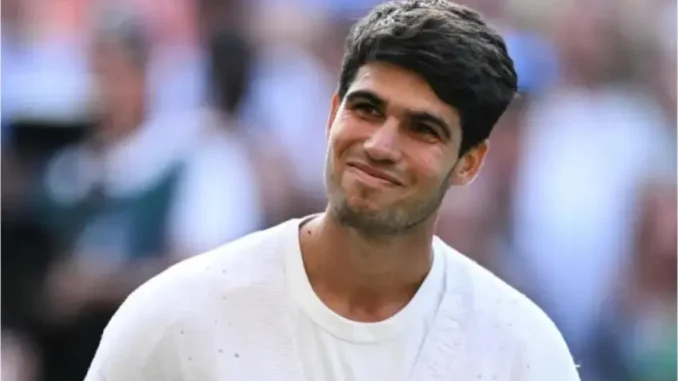
In a surprising yet calculated move, Carlos Alcaraz, the world No. 2 tennis sensation, announced his withdrawal from the 2025 National Bank Open in Toronto, a decision that has sparked widespread discussion among fans and analysts alike. The 22-year-old Spaniard, known for his relentless competitive spirit, revealed on social media that he would skip the ATP Masters 1000 event to prioritize physical and mental recovery after an intense first half of the season. “After many consecutive weeks of competition without rest, I will not be able to play in Toronto this year,” Alcaraz shared. “I have small muscle issues and I need to recover physically and mentally for what comes next. To the tournament and to my fans in Canada, I am very sorry, I will see you next year!”
This choice marks a departure from Alcaraz’s typically packed schedule, reflecting a newfound maturity as he navigates the grueling demands of professional tennis. The past few months have been a whirlwind for the five-time Grand Slam champion. Since April, he has competed in a string of high-stakes tournaments, clinching titles in Monte Carlo, Rome, Roland Garros, and Queen’s, and reaching the final in Barcelona. His only absence was the Mutua Madrid Open due to a minor injury, a rare pause in an otherwise relentless campaign. Alcaraz’s 2025 season has been nothing short of spectacular, with a remarkable 48-6 win-loss record across all surfaces, including a historic French Open victory where he overcame a two-set deficit against top seed Jannik Sinner in a five-set epic. However, his bid for a third consecutive Wimbledon title was halted by Sinner in a gripping four-set final, a loss that underscored the physical and mental toll of his packed schedule.
The decision to forego Toronto, a prestigious event with a newly expanded 12-day, 96-player format, was influenced by advice from former Spanish tennis star Alex Corretja, who emphasized the importance of rest. “I just hope he doesn’t go to Toronto,” Corretja said on a recent broadcast, highlighting the need for Alcaraz to recover from the season’s exertions. This counsel resonated with Alcaraz and his team, led by coach Juan Carlos Ferrero, who have increasingly prioritized long-term sustainability over short-term gains. The withdrawal aligns with Alcaraz’s broader goal of peaking for the US Open and ATP Finals, where the stakes are highest. By skipping Toronto, he aims to conserve energy and address minor muscle issues, ensuring he’s in top form for the hard-court season.
Alcaraz’s absence from Toronto is notable not only for its rarity but also for its context. He joins a list of high-profile players, including Sinner, Novak Djokovic, and Jack Draper, who have also withdrawn, highlighting the intense physical demands of the modern tennis calendar. Alcaraz has been vocal about the challenges of the expanded Masters 1000 format, previously stating, “The one-week ones are better. You train, you have to mentally prepare for the game… you’re not resting, really. It’s two full weeks. That’s why I prefer the one-week Masters 1000.” His critique reflects a broader sentiment among players about the relentless pace of the tour, which leaves little room for recovery.
This strategic hiatus is more than a response to physical fatigue; it’s a proactive step to avoid the burnout that has plagued other young stars. Alcaraz’s candidness about his mental health, seen in moments like his admission of feeling “mentally screwed” after a Miami Open loss earlier this year, underscores his awareness of the sport’s psychological demands. His decision to prioritize rest over a potential $1.1 million payday in Toronto demonstrates a focus on longevity, a trait that sets him apart from his peers. As he prepares for the US Open, where he claimed his first major title in 2022, Alcaraz’s choice reflects a player who is not just chasing titles but building a legacy.
Fans in Canada may be disappointed, but Alcaraz’s withdrawal is a testament to his growing wisdom at just 22. His electrifying style—marked by explosive forehands, deft drop shots, and unmatched athleticism—has drawn comparisons to Rafael Nadal, yet his willingness to pause and recalibrate shows a unique blend of ambition and restraint. As he rests and resets, the tennis world awaits his return, confident that this break could be the foundation for an even more dominant second half of 2025.
Leave a Reply